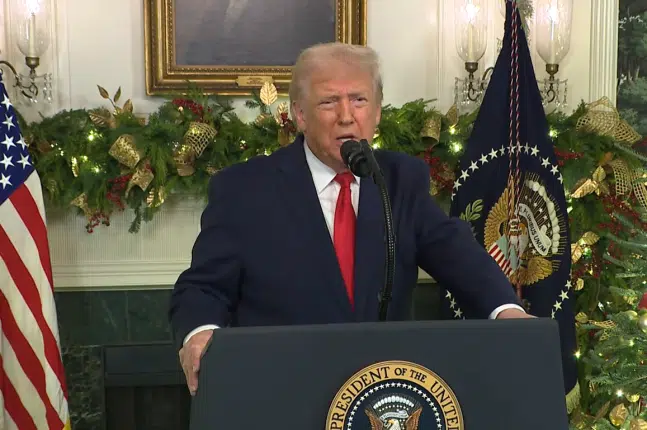We can’t say we weren’t warned.
On October 1st, 2008, Senator Jim DeMint hypothesized that one of the principal causes of the federal government’s plan to purchase toxic mortgage-backed securities as part of the $700 billion Troubled Asset Relief Program (TARP) was to bail out foreign entities.
On “The Mark Levin Show,” he said, “I think China and Saudi Arabia are holding a lot of these securitized mortgages. And I think they’ve basically said they’re not going to loan us any more money until we buy them back. And if they don’t give us loans every day, we default on our loans [because] we have so much debt as a nation. So, we’re going to borrow more money to try to make this situation right. There’s nothing else for me, Mark, that explains the urgency in using a sledgehammer to fix something that most of us know a few screwdrivers could fix.”
He may have been right, after all. Although, since TARP was instantly transformed into a bank recapitalization fund by then-Treasury Secretary Hank Paulson, it was invariably the Federal Reserve that stepped in to buy the troubled assets — some $1.25 trillion worth.
All of the securities the Fed purchased were those underwritten by Fannie Mae, Freddie Mac, and Ginnie Mae (Federal Housing Administration) — the government entities that helped cause the housing bubble with their loose underwriting standards and “affordable housing goals”.
Based on new data released by the Federal Reserve, of the $1.25 trillion bought by the Fed, foreign entities sold some $442.7 billion of MBS at the height of the program. It was a full bailout, too. According to the Federal Reserve, the securities were purchased at “Current face value of the securities, which is the remaining principal balance of the underlying mortgages.”
These were not loans, but outright purchases. That’s a bailout.
That included $127.5 billion given to MBS Credit Suisse (Switzerland) for the junky securities, $117.8 billion to Deutsche Bank (Germany), $63.1 billion to Barclays Capital (UK), $55.5 billion to UBS Securities (Switzerland), $27 billion to BNP Paribas (France), $24.4 billion to the Royal Bank of Scotland (UK), and $22.2 billion to Nomura Securities (Japan). Another $4.2 billion was given to the Royal Bank of Canada, and $917 million to Mizuho Securities (Japan).
According to the New York Fed’s website, the purpose of the program was to “foster improved conditions in financial markets”. Now, we know by that the Fed meant in foreign countries, too.
These foreign financial institutions also happen to be primary dealers, those banks that are responsible for lending money to the government via purchases of U.S. treasuries at government auctions. Senator DeMint thought that perhaps if the foreign entities could not get rid of the MBS, they would not lend us money, or could not afford to. He may have been right. Of the $9.2 trillion federal debt held by the public, some $4.268 trillion is held overseas by foreign governments.
Foreign investment in the U.S. housing market, which had been booming in the 2000’s, had been widespread overseas. Of the $5.5 trillion in MBS owned or guaranteed by Fannie and Freddie, $1.5 trillion had been sold to foreign investors, as reported by the New York Times.
According to the Times article, in 2008 “Asian institutions and investors [held] some $800 billion in securities issued by Fannie and Freddie, the bulk of that in China and Japan. China held $376 billion and Japan $228 billion as of June 2007, the most recent country-specific Treasury figures… In Europe, roughly $39 billion in Fannie and Freddie debt is held in Luxembourg and $33 billion more in Belgium, countries that are home to large investment management firms. Investors in Britain hold $28 billion, and Russian buyers hold $75 billion. Sovereign wealth funds in the Middle East are also believed to be big investors in Fannie and Freddie debt.”
Fannie and Freddie had sold their securities with the implicit backing of the government, and Ginnie Mae with the explicit backing. As the Times noted, “For more than a decade, Fannie Mae and Freddie Mac, the housing giants that make the American mortgage market run, have attracted overseas investors with a simple pitch: the securities they issue are just as good as the United States government’s, and they usually pay better.”
Which is how we got into this mess. Fannie and Freddie sold their junk all over the world, and when the housing market experienced critical failures, the foreign institutions demanded their money back. Else, why was the program necessary?
The fact that now the Fed has taken it upon itself to bail out foreign entities that were holding bad paper should be cause for concern for all Americans. Although they had ample warning from Senator Jim DeMint, who at the time was a voice in the wilderness. He was only one of 25 senators to have voted “no” against TARP, although no Senator, nor any lawmaker alive, voted to adopt the Fed’s foreign bailout.
Instead, the $1.25 trillion bailout, which transferred almost a half a trillion dollars overseas without Congressional approval was authorized by Section 14 of the Federal Reserve Act — in 1913. That means no new appropriations by Congress are necessary for the Fed to act to send money overseas.
Which we now know they did. Perhaps if elected officials did not have to hypothesize about what the Fed was up to or why, there wouldn’t be wholesale dismay about revelations regarding the central bank’s activities over the past couple of years to bail out seemingly the whole world.
Perhaps it’s time for the new Congress to take up Representative Ron Paul’s Fed Audit bill, so that elected officials can make decisions about what the Fed is up to, and whether or not they even approve. Perhaps then we won’t get fooled again.
Robert Romano is the Senior Editor of Americans for Limited Government (ALG) News Bureau.






